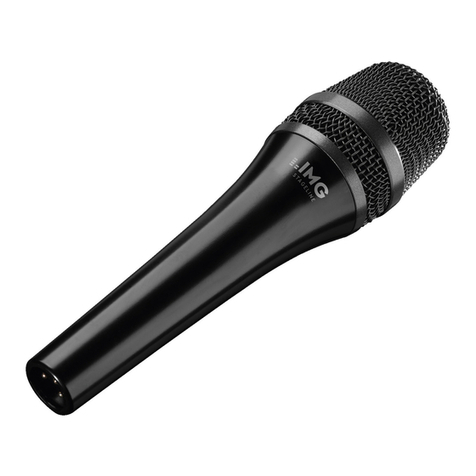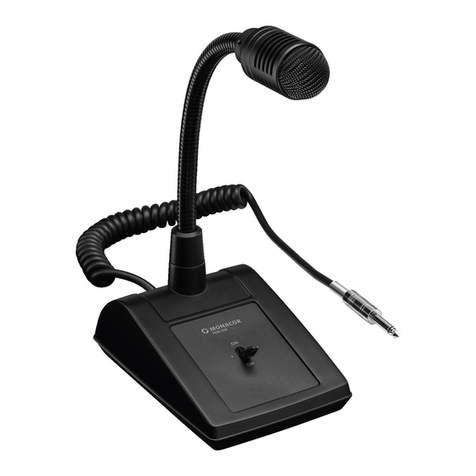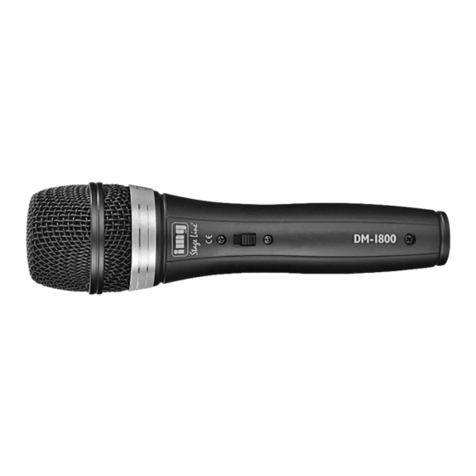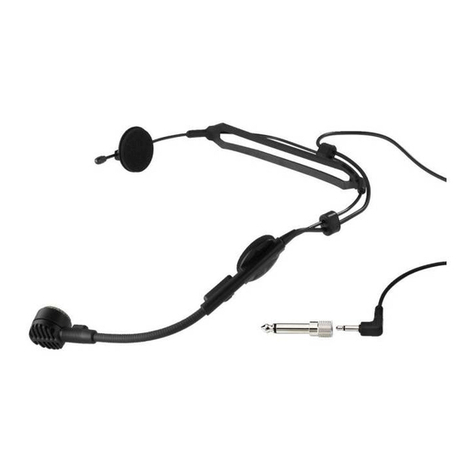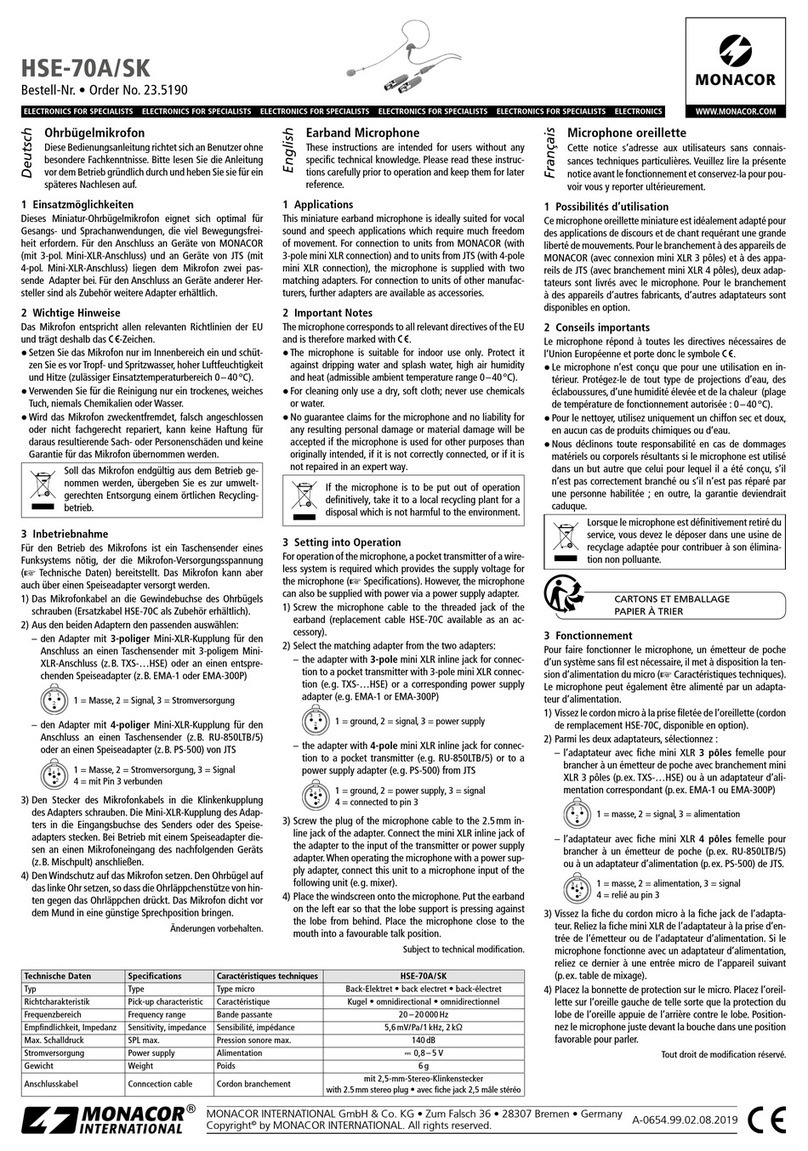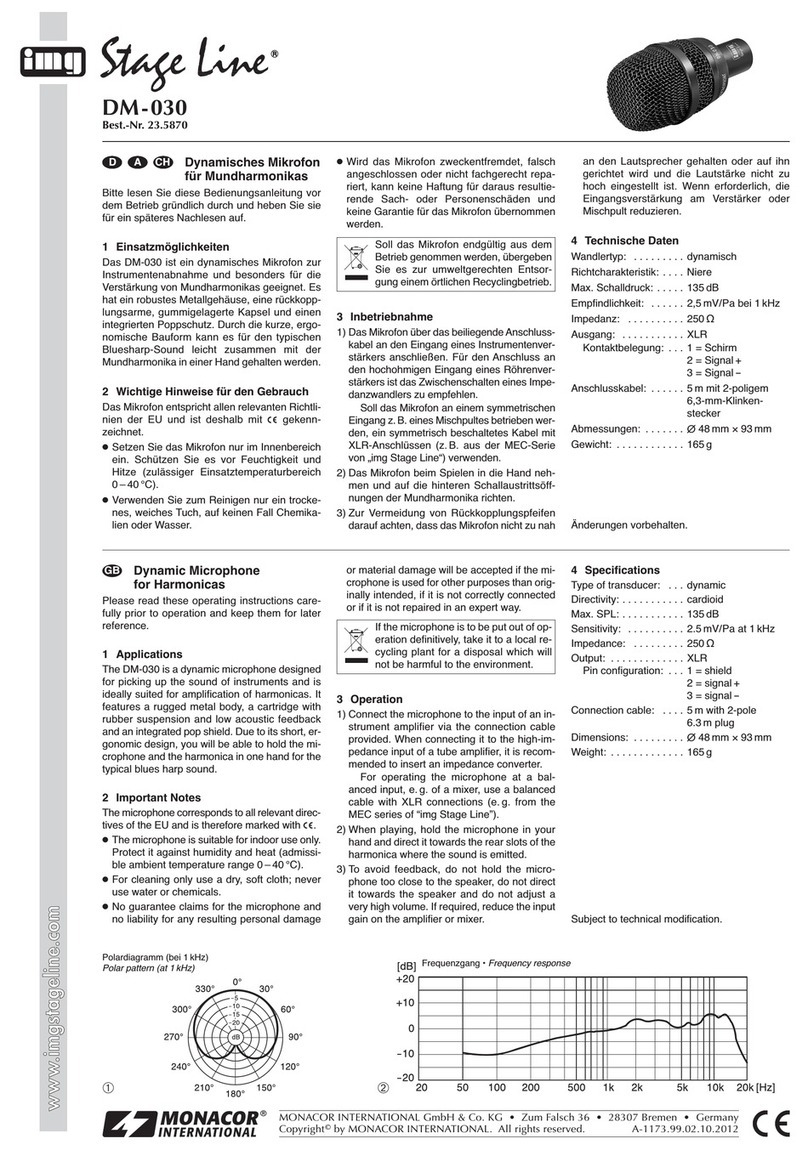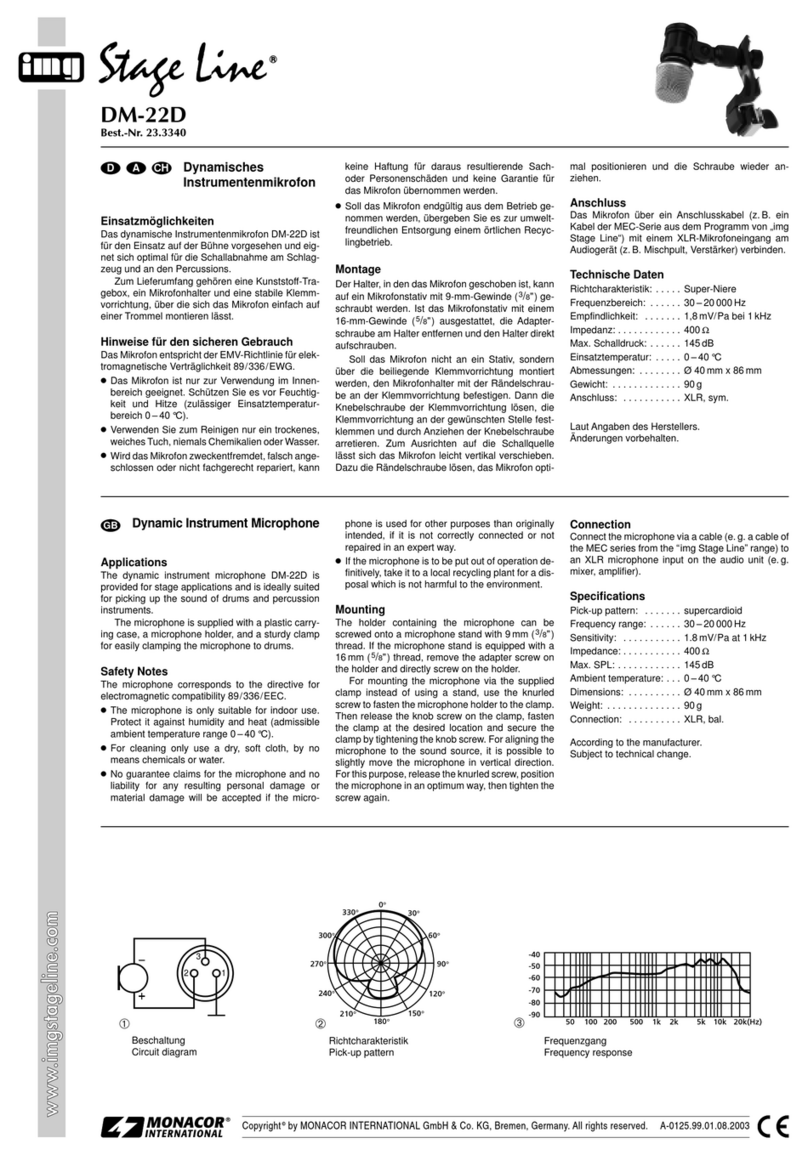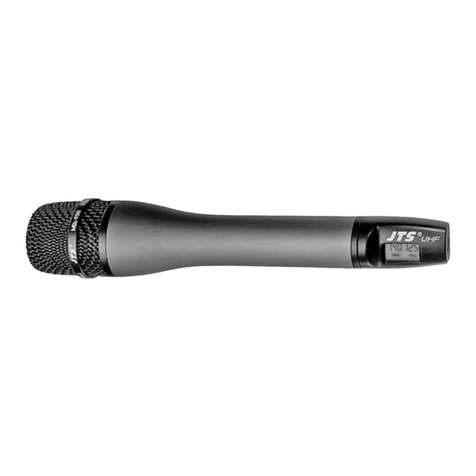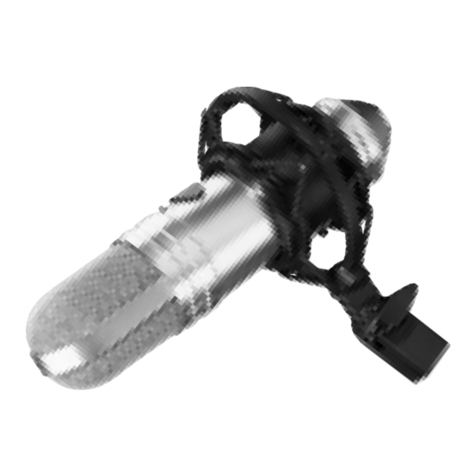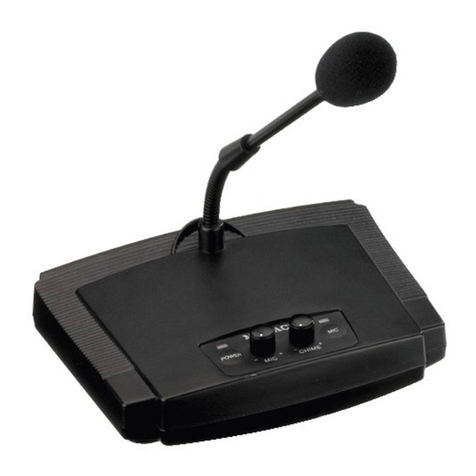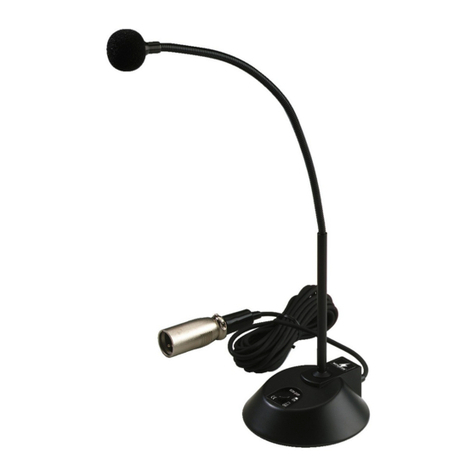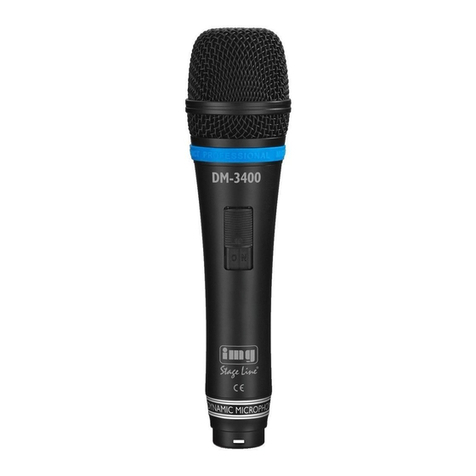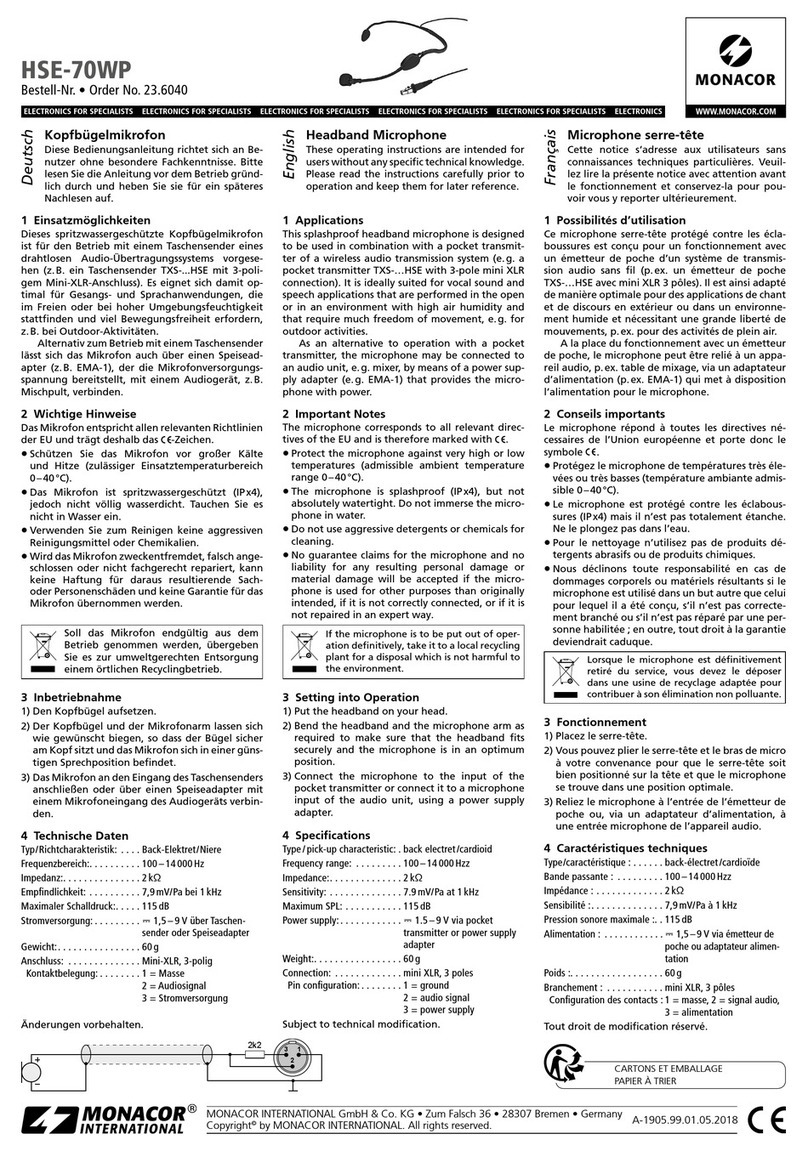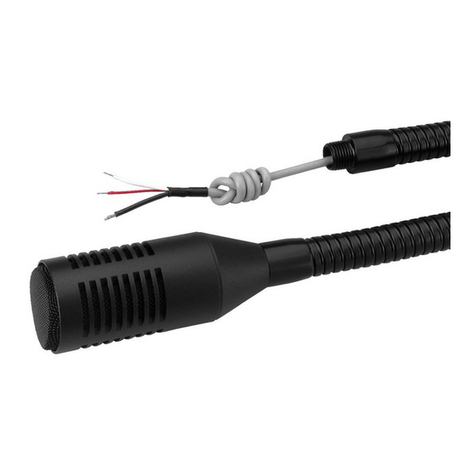
ELECTRONICS FOR SPECIALISTS ELECTRONICS FOR SPECIALISTS ELECTRONICS FOR SPECIALISTS ELECTRONICS FOR SPECIALISTS ELECTRONICS FOR SPECIALISTS ELECTRONICS
PDM-300 Bestell-Nr. • Order No. 0231200
PDM-302 Bestell-Nr. • Order No. 0235560
MONACOR INTERNATIONAL GmbH & Co. KG • Zum Falsch 36 • 28307 Bremen • Germany
Copyright©by MONACOR INTERNATIONAL. All rights reserved. A-0848.99.04.10.2020
Microphone de table Public Adress
Cette notice s’adresse aux utilisateurs sans
connaissances techniques particulières. Veuil-
lez lire la présente notice avant le fonction-
nement et conservez-la pour pouvoir vous y
reporter ultérieurement.
1 Possibilités d’utilisation
Ce microphone est spécialement conçu pour une
utilisation dans des installations de Public Adress.
Il est adapté pour toutes les utilisations nécessitant
un microphone de table fixe pour effectuer des an-
nonces, présentations etc.
2 Conseils importants d’utilisation
Le microphone répond à toutes les directives né-
cessaires de l’Union européenne et porte donc le
symbole .
•
Le microphone n’est conçu que pour une utilisation
en intérieur. Protégez-le de l’humidité et de la cha-
leur (température ambiante admissible 0–40°C).
•
Pour le nettoyage, utilisez uniquement un chiffon
doux et sec, en aucun cas de produits chimiques
ou d’eau.
•
Nous déclinons toute responsabilité en cas de dom-
mages matériels ou corporels résultants si le micro-
phone est utilisé dans un but autre que celui pour
lequel il a été conçu, s’il n’est pas correctement
utilisé ou s’il n’est pas réparé par une personne ha-
bilitée ; en outre, la garantie deviendrait caduque.
Lorsque le microphone est définitivement
retiré du service, vous devez le déposer
dans une usine de recyclage adaptée pour
contribuer à son élimination non polluante.
CARTONS ET EMBALLAGE
PAPIER À TRIER
3 Branchement
Le modèle PDM-300 avec fiche jack 6,35 mâle est
prévu pour être branché à une entrée micro asymé-
trique, le modèle PDM-302 avec fiche XLR mâle à
une entrée micro symétrique. Reliez le microphone
via son cordon de liaison à l’entrée micro correspon-
dante de l’amplificateur ou de la table de mixage.
4 Utilisation
Le microphone est allumé et éteint via un interrup-
teur à bascule :
1. Pour des annonces brèves, maintenez l’interrup-
teur enfoncé vers le haut (il ne s’enclenche pas)
et parlez dans le micro. A la fin de l’annonce, re-
lâchez l’interrupteur, pour qu’il revienne dans la
position médiane (microphone coupé).
2. Pour des annonces plus longues, mettez l’inter-
rupteur sur la position inférieure (il s’enclenche)
et parlez dans le microphone. Pour éteindre le
micro à la fin de l’annonce, remettez l’interrup-
teur sur la position médiane.
5 Caractéristiques techniques
Système : � � � � � � � � � � dynamique, cardioïde
Bande passante : � � � � 60 – 12 000 Hz
Sensibilité :� � � � � � � � � 3,2mV/Pa à 1kHz
Impédance : � � � � � � � � 600 Ω
Branchement
PDM-300 : � � � � � � � cordon 1 m avec fiche jack 6,35
mâle, asymétrique
PDM-302 : � � � � � � � cordon 5 m avec fiche XLR mâle,
symétrique
Dimensions :� � � � � � � � boîtier pupitre 120 × 60 × 160 mm,
longueur col de cygne 310 mm
Poids : � � � � � � � � � � � � 810 g
Tout droit de modification réservé.
PA Desk Microphone
These instructions are intended for users with-
out any specific technical knowledge. Please
read these instructions carefully prior to oper-
ation and keep them for later reference.
1 Applications
This desk microphone has especially been designed
for PA systems. It is suitable for all applications
which require a stable desk microphone for an-
nouncements, lectures, etc.
2 Important Notes
The microphone corresponds to all relevant direc-
tives of the EU and is therefore marked with .
•
The microphone is suitable for indoor use only.
Protect it against humidity and heat (admissible
ambient temperature range 0–40°C).
•
For cleaning only use a dry, soft cloth, never use
chemicals or water.
•
No guarantee claims for the microphone and no
liability for any resulting personal damage or
material damage will be accepted if the micro-
phone is used for other purposes than originally
intended, if it is not correctly operated, or if it is
not repaired in an expert way.
If the microphone is to be put out of
operation definitively, take it to a local
recycling plant for a disposal which is not
harmful to the environment.
3 Connection
Model PDM-300 with 6.3mm plug is designed for
connection to an unbalanced microphone input,
model PDM-302 with XLR plug for connection to a
balanced microphone input. Connect the desk mi-
crophone via its cable to the corresponding micro-
phone input at the amplifier or mixer.
4 Operation
The microphone is switched on and off via its toggle
switch:
1. For short announcements, keep the switch
pressed upwards (will not engage) and speak
into the microphone. After the announcement
release the switch so that it returns to mid-
position (microphone off).
2. For longer announcements, put the switch into
the lower position (will engage) and speak into
the microphone. To switch off the microphone
after the announcement, set the switch to
mid-position.
5 Specifications
System:� � � � � � � � � � � � dynamic, cardioid
Frequency range: � � � � 60 – 12 000 Hz
Sensitivity: � � � � � � � � � 3�2 mV/Pa at 1 kHz
Impedance:� � � � � � � � � 600 Ω
Connection
PDM-300: � � � � � � � � 1 m cable with 6�3 mm plug, unbal�
PDM-302: � � � � � � � � 5 m cable with XLR plug, bal�
Dimensions: � � � � � � � � console housing
120 × 60 × 160 mm,
gooseneck length 310 mm
Weight:� � � � � � � � � � � � 810 g
Subject to technical modification.
ELA-Tischmikrofon
Diese Bedienungsanleitung richtet sich an Be-
nutzer ohne besondere Fachkenntnisse. Bitte
lesen Sie die Anleitung vor dem Betrieb gründ-
lich durch und heben Sie sie für ein späteres
Nachlesen auf.
1 Verwendungsmöglichkeiten
Dieses Mikrofon ist speziell für den Einsatz in
ELA-Anlagen konzipiert. Es eignet sich für alle
Anwendungen, bei denen ein standfestes Tischmi-
krofon für Durchsagen, Vorträge etc. benötigt wird.
2 Wichtige Hinweise für den Gebrauch
Das Mikrofon entspricht allen relevanten Richt-
linien der EU und trägt deshalb das -Zeichen.
•
Setzen Sie das Mikrofon nur im Innenbereich ein
und schützen Sie es vor Feuchtigkeit und Hitze
(zulässiger Einsatztemperaturbereich 0–40°C).
•
Verwenden Sie zum Reinigen nur ein trockenes,
weiches Tuch, niemals Wasser oder Chemikalien.
•
Wird das Mikrofon zweckentfremdet, nicht rich-
tig bedient oder nicht fachgerecht repariert, kann
keine Haftung für daraus resultierende Sach- oder
Personenschäden und keine Garantie für das Mik-
rofon übernommen werden.
Soll das Mikrofon endgültig aus dem
Betrieb genommen werden, übergeben
Sie es zur umweltgerechten Entsorgung
einem örtlichen Recyclingbetrieb.
3 Anschluss
Das Modell PDM-300 mit 6,3-mm-Klinkenstecker
ist für den Anschluss an einen asymmetrischen
Mikrofoneingang ausgelegt, das Modell PDM-302
mit XLR-Stecker für den Anschluss an einen sym-
metrischen Mikrofoneingang. Das Tischmikrofon
über sein Anschlusskabel mit dem entsprechenden
Mikrofoneingang am Verstärker oder Mischpult
verbinden.
4 Bedienung
Das Mikrofon wird über den Kippschalter aus- und
eingeschaltet:
1. Für kurze Durchsagen den Schalter nach oben
gedrückt halten (rastet nicht ein) und in das
Mikrofon sprechen. Nach dem Ende der Durch-
sage den Schalter loslassen, sodass er wieder in
die Mittelposition (Mikrofon aus) kippt.
2. Für längere Durchsagen den Schalter in die un-
tere Position legen (rastet ein) und in das Mik-
rofon sprechen. Zum Ausschalten des Mikrofons
nach dem Ende der Durchsage den Schalter in die
Mittelposition stellen.
5 Technische Daten
System:� � � � � � � � � � � � dynamisch, Nierencharakteristik
Frequenzbereich: � � � � 60 – 12 000 Hz
Empfindlichkeit: � � � � � 3,2mV/Pa bei 1kHz
Impedanz: � � � � � � � � � 600 Ω
Anschluss
PDM-300: � � � � � � � � 1-m-Kabel mit 6,3-mm-Klinken-
stecker, asym�
PDM-302: � � � � � � � � 5-m-Kabel mit XLR-Stecker, sym�
Abmessungen: � � � � � � Pultgehäuse 120 × 60 × 160 mm,
Schwanenhalslänge 310 mm
Gewicht:� � � � � � � � � � � 810 g
Änderungen vorbehalten.
DeutschEnglishFrançais

